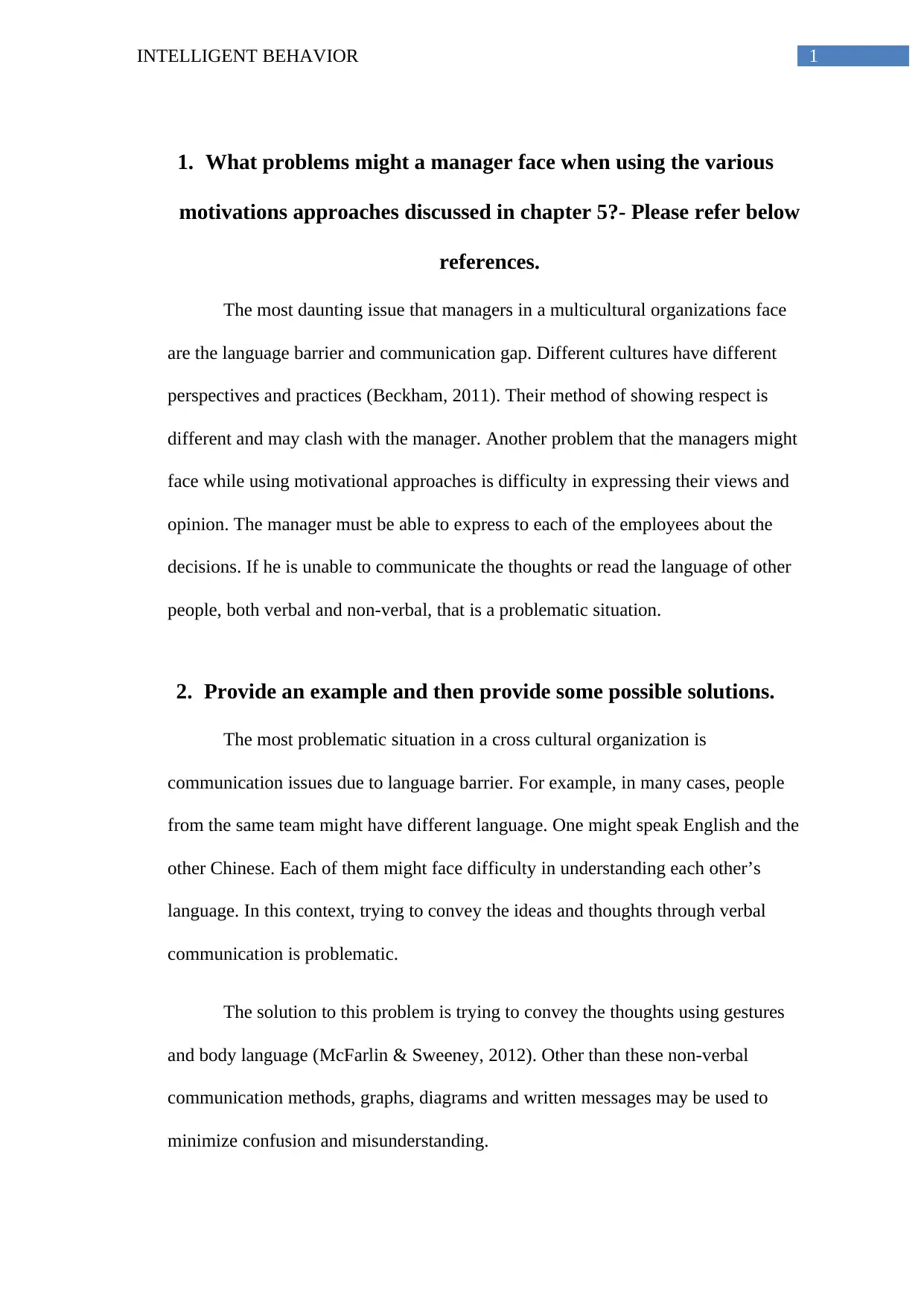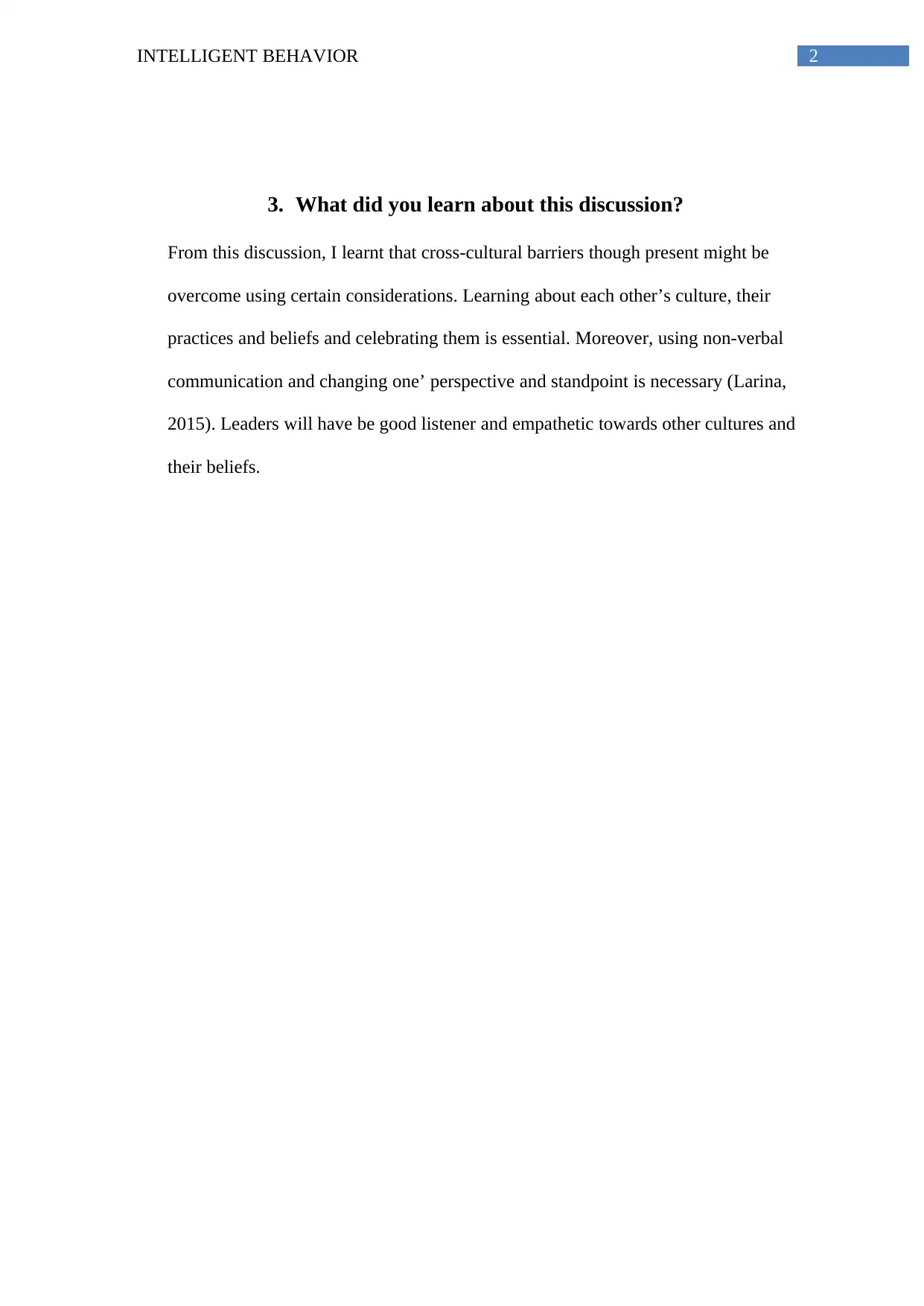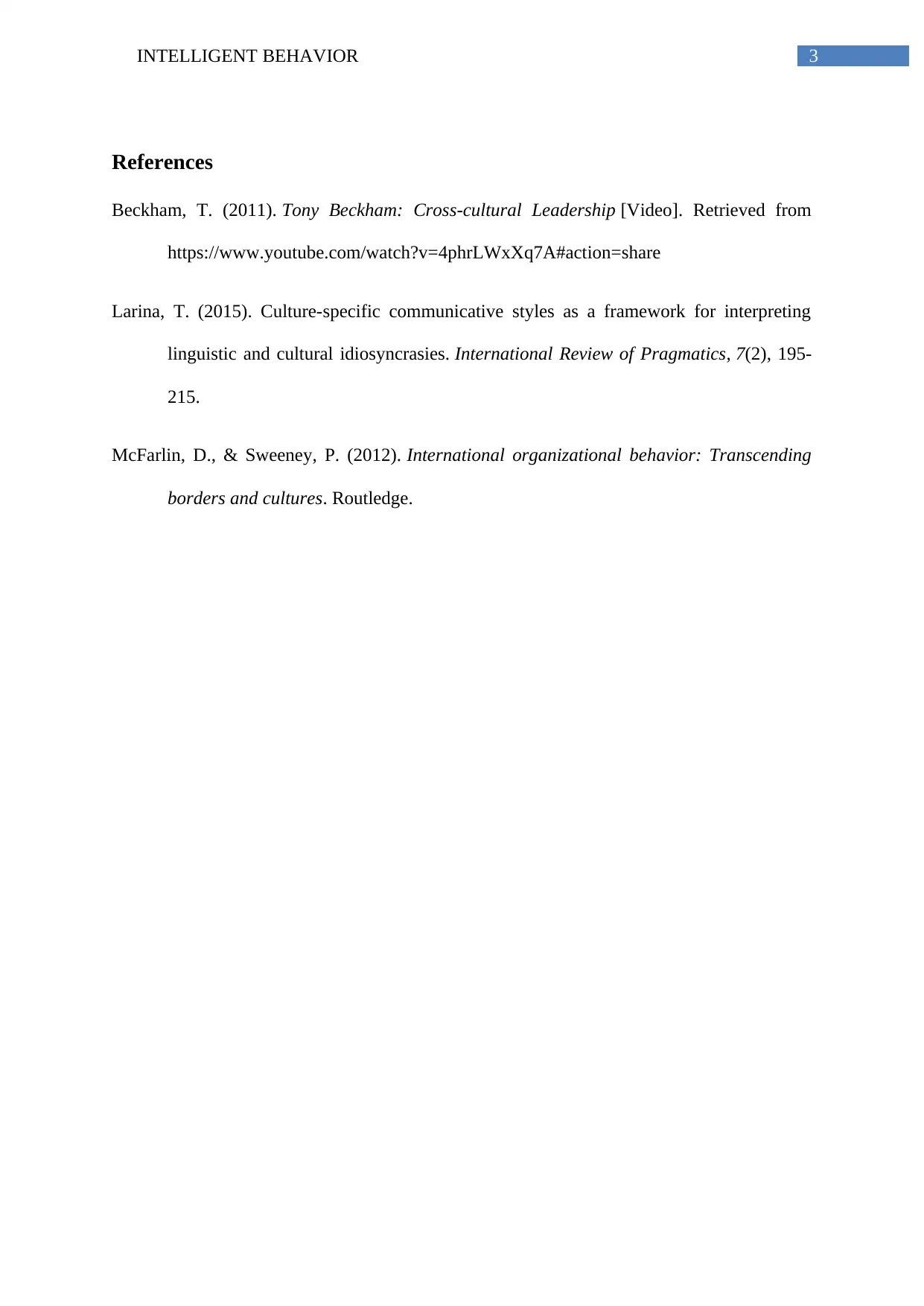University Leadership Module: Intelligent Behavior Assignment Analysis
VerifiedAdded on 2022/12/21
|4
|457
|36
Homework Assignment
AI Summary
This assignment delves into the challenges faced by managers when applying motivational approaches in multicultural environments. It highlights the communication and language barriers that arise due to differing cultural perspectives and practices. The assignment provides a real-world example of language barriers within a team and suggests solutions such as using gestures, body language, diagrams, and written messages to overcome these issues. Furthermore, it reflects on the learning outcomes, emphasizing the importance of understanding and celebrating different cultures, utilizing non-verbal communication, and adopting an empathetic and open-minded approach to leadership. The assignment is based on the provided references, which include videos and academic articles, and it aligns with the concepts of path-goal leadership in a multicultural setting. The assignment emphasizes that leaders must be good listeners and empathetic towards other cultures and their beliefs.
1 out of 4









![[object Object]](/_next/static/media/star-bottom.7253800d.svg)